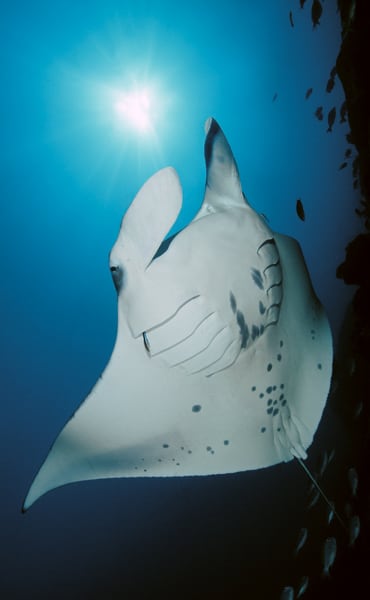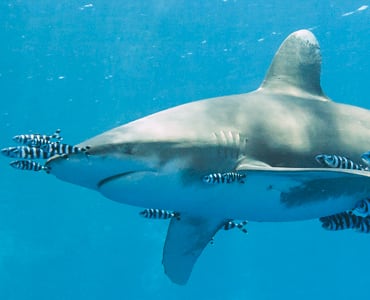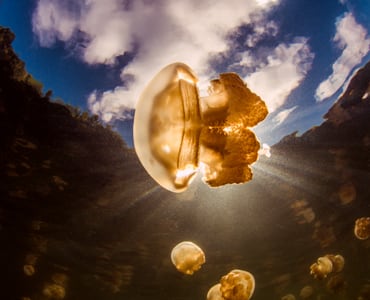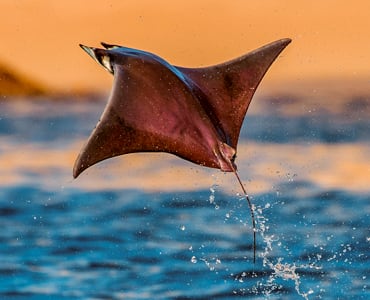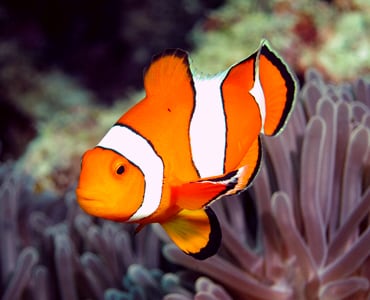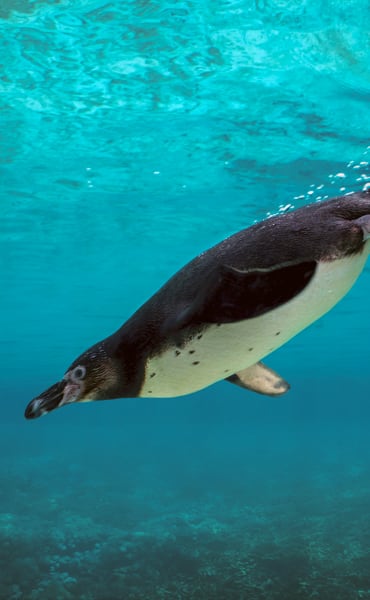We’re here to help, 24/7.
Connect with our expert travel consultants to plan your next trip.
-
- Call us
- 1 (844) 334-1666
-
- Email Us
-
- About us
- Who we are
Featured Liveaboards
See more liveaboards
Ocean Quest
Australia-
- from $ 205 / day
- 9.0 Superb
- 476reviews

Galapagos Aggressor III
Galapagos-
- from $ 585 / day
- 9.1 Superb
- 93reviews

Emperor Serenity
Maldives-
- from $ 374 / day
- 9.3 Superb
- 188reviews

Bavaria
Thailand-
- from $ 173 / day
- 8.9 Fabulous
- 103reviews

Black Pearl
Micronesia-
- from $ 354 / day
- 9.1 Superb
- 42reviews

Palau Sport
Philippines-
- from $ 280 / day
- 8.3 Very good
- 23reviews
We make liveaboard booking easy!
30 countries, 311 ships, 23,849 trips and 53,977 verified customer reviews.
Unforgettable liveaboard diving adventures start on LiveAboard.com where we make it easy to compare liveaboard destinations, amenities, dive types and prices to find the best dive safari for your diving holidays.
Whether it's reef diving, wreck diving, whale diving, shark diving, night diving, cold water diving or underwater photography you are after, LiveAboard.com makes the booking of your trip easy, with customer support by experienced divers and 100% Best Price Guaranteed policy.
If you're looking for the best liveaboard diving destinations and boats the world has to offer, you've come to the right place.
Liveaboard diving holidays pack more diving in the same trip and allow divers to explore far-flung dive areas in the most beautiful destinations: the Red Sea in Egypt, the Maldives, Raja Ampat and Komodo in Indonesia, Australia’s Great Barrier Reef, the Similan Islands in Thailand and the Galapagos Islands to name a few.
The boat operators listed on LiveAboard.com are picked for their expertise, location, experience offered and knowledge of the region they operate in. Popular liveaboards include: Aggressor Fleet, Emperor Divers, Blue O Two, Scubaspa, Nautilus and Explorer Ventures and many more liveaboards Worldwide.
What to know about Liveaboard Diving
Planning a liveaboard trip and not sure where to start? We’ve answered the most common questions to help you prepare with confidence. From packing tips to booking details, find the answers you need here.
What is a diving liveaboard?
A dive liveaboard is a type of boat or vessel designed to accommodate scuba divers for extended trips. It allows divers to stay on the boat for several days or even weeks while exploring multiple dive sites in remote locations, such as Cocos Island, Socorro, Tubbataha Reef, and Palau.
What are the benefits of liveaboard diving?
A dive holiday on a liveaboard has a few great dive-specific advantages, such as:
- Maximized dive time: wake up directly at the dive site and dive multiple times per day.
- Access to remote and pristine dive locations: Liveaboards can reach remote and pristine dive sites that are often inaccessible by day trips
- Enhanced dive experience: being surrounded by like-minded diving enthusiasts creates a unique and stimulating environment.
- Convenience and comfort: Liveaboards provide comfortable accommodations, meals, and all the necessary diving facilities, allowing divers to relax and focus on their diving experience.
How much does a liveaboard diving trip generally cost?
The cost of a liveaboard cruise will depend on various factors, such as destination, duration, level of comfort and convenience, and seasonality. Typically there are three tiers of liveaboards with regards to pricing:
- Budget liveaboards: Around $150–$250 per day. Some may find some great examples in Australia, Thailand, and Egypt.
- Mid-range liveaboards: $300–$500 per day. Terrific liveaboards in Maldives, Indonesia, and Mexico.
- Luxury liveaboards: $600+ per day. Unforgettable experiences in Galapagos, Antarctica, and the Arctic.
What are the top destinations for liveaboard diving?
There are many incredible liveaboard diving destinations around the world.
Some of the most well-known and popular of these destinations are:
- Egypt: The Red Sea is famous for its vibrant coral reefs and wreck dives.
- Maldives: Known for manta rays, whale sharks, and crystal-clear waters.
- Indonesia: A biodiversity hotspot, home to countless species of marine life.
- Galapagos: Renowned for hammerhead sharks, marine iguanas, and unique underwater environments.
- Australia: The Great Barrier Reef is a must-visit for any diver, featuring expansive coral systems and diverse marine life.
How do I choose the best liveaboard for my diving experience level?
When choosing a liveaboard, consider your diving experience and the type of dive offered. Many liveaboards cater to different skill levels: Beginners might prefer trips with shallow, calm dive sites and more relaxed itineraries. Be sure to check out our in-depth comparison article on dive certifications, if you’re looking to improve your diving skills. Advanced divers might prefer liveaboards offering deeper dives, strong currents, and challenging sites like wrecks or drift dives.
If you need guidance selecting the perfect liveaboard, our team is always here to help you find the liveaboard that best matches your experience level and preferences.
What kind of people generally book a liveaboard trip?
- Experienced divers: Liveaboards often visit remote locations and offer deeper or more challenging dives. Therefore, some level of diving experience and certification is usually required.
- Divers seeking adventure and exploration: Liveaboards offer access to unique and pristine dive sites that are often inaccessible by day trips. They are ideal for those who want to explore new underwater worlds and encounter diverse marine life.
- Divers who want to maximize dive time: Liveaboards typically offer multiple dives per day, allowing divers to make the most of their time underwater.
- Divers who value convenience and comfort: Liveaboards provide comfortable accommodations, meals, and all the necessary diving facilities, allowing divers to focus on their passion without worrying about logistics.
- Social divers: Liveaboards create a sense of community among divers, allowing them to connect with like-minded individuals and share their passion for the underwater world.
What does a typical day on a dive cruise look like?
Dive cruises offer itineraries packed to the rim with diving adventure, good food, and fun times. Here’s an example:
Morning
- Wake up to a light breakfast and dive briefing.
- Gear up and embark on your first dive of the day.
- Return to the boat for a hearty breakfast and relaxation.
- Second dive briefing followed by the second dive.
- Lunch and some leisure time on the boat.
Afternoon
- Potential for a third and/or fourth dive, depending on the itinerary and your preferences.
- Enjoy afternoon snacks, relax, read, or socialize on the sundeck.
- Take a nap or explore other activities like snorkeling or kayaking.
Evening
- Indulge in a delicious dinner prepared by the onboard chef.
- Socialize with fellow divers, share stories, and enjoy the evening atmosphere.
- Optional night dive for those seeking a unique underwater experience.
How many dives does a liveaboard cruise offer?
In general, you can expect to have 3-4 dives per day on a liveaboard. Some operators might offer the option for a fifth dive, especially if conditions are favorable, or a night dive. However, the exact number can vary depending on the itinerary, destination, and the length of each dive, but in general, you could complete anywhere from 15 to 30 dives in total.
Is there a minimum or recommended number of logged dives required before I can go on a liveaboard?
Yes, there often is a minimum or recommended number of logged dives required before going on a liveaboard. This is because liveaboards typically visit more remote dive sites, often with stronger currents or greater depths, and offer multiple daily dives. These factors can demand a higher level of experience and comfort in the water.
What kind of diving is typical for liveaboards?
Some types of diving are practically impossible to experience without a liveaboard. Whether it's logistics or the fact that "one dive just isn't enough to take it all in", these dives are just better from dive cruises.
Night divingThe ocean is a completely different place at night and worth experiencing during a night dive. Diving into the ocean at night is exciting and thrilling, and divers can enjoy seeing familiar dive sites completely differently. Learn more about night diving
Wreck divingAs soon as a ship sinks, its huge structure provides shelter for organisms in an often desolate seabed surrounding, resulting in it becoming rapidly inhabited by many forms of marine life. The structures are usually made of steel, which is exceptionally hard-wearing, giving an excellent foundation for larvae to grow, followed by soft corals that form a framework highly similar to natural reefs. This, in turn, attracts vast numbers of reef fish, joined by larger predators and pelagics. Some of the most intriguing wrecks are found far from the coast and, as such, difficult - if not impossible - to reach during a day trip. Learn more about wreck diving
Wall divingWall diving is exhilarating, and there is nothing quite like hovering at the edge of a wall and watching the vast, inky depths of the ocean below. It offers the opportunity to enjoy striking and unique terrains, colorful coral formations, plentiful reef fish, and larger pelagic species. The best (preserved) walls are found in areas that aren't overrun by tourists, and thus are usually only reachable by liveaboard. Learn more about wall diving
Tec divingTechnical diving, also referred to as "tech diving" or "tec diving", is any type of diving outside of recreational limits. It developed from a form of cave diving and typically involves dives that are beyond 40 meters (131 feet) deep or extend in an enclosed environment beyond 40 meters from the entry point. As such, liveaboards are the answer for divers who seek this kind of challenge. Learn more about technical diving
Ice divingIce diving is one of the most adventurous types of diving and is a great way to try something completely different. It is challenging, takes extra preparation, and differs from most recreational dive types. Due to the lack of resorts on the North and South Pole, liveaboards are the primary option for this kind of dive. Learn more about ice diving
Drift divingThere's nothing like a dive with a ripping current, coral whizzing by, and a frenzy of fish and little critters doing their best to hide from or fight the current. Some of the most beautiful diving locations in the world are home to currents that constantly replenish the reef with nutrients, and quite often, you'll need a liveaboard to get there. Learn more about drift diving
What should I pack for a liveaboard diving trip?
Pack light, but ensure you have the essentials:
- Dive gear (if not renting): mask, fins, wetsuit, dive computer, etc.
- Comfortable, casual clothing for onboard
- Swimwear, sunblock, hat, and sunglasses for lounging on deck
- Personal items: toiletries, a first-aid kit, and any medications
- Cameras or underwater photography gear (many trips offer photography-friendly itineraries)
For more detailed tips on packing and preparing for your first liveaboard trip, check out our article "A Complete Beginner's Guide to Liveaboard Diving".
Do I need to be an experienced diver to go on a liveaboard?
Not necessarily! While some liveaboard trips are geared toward experienced or technical divers, many operators offer itineraries suitable for beginners or intermediate divers. Some trips include open water courses or offer guided dives with instructors. Always check the dive site conditions (depth, current, etc.) to ensure the trip matches your skill level.
What marine life can I expect to see on a liveaboard dive?
The marine life you’ll encounter depends on the destination, but common sightings include:
- The Maldives: Manta rays, whale sharks, and colorful coral reefs.
- Indonesia: Giant mantas, schools of fish, turtles, and diverse coral species.
- The Galapagos: Hammerhead sharks, sea lions, and even marine iguanas.
- Egypt: Anemonefish, Napoleon wrasse, and shipwrecks teeming with life.
Every liveaboard destination offers unique biodiversity, from large pelagics to vibrant coral ecosystems.
Are liveaboard trips suitable for families or groups?
Yes! Many liveaboards cater to families and groups. Some offer family-friendly itineraries, including activities for non-divers, such as snorkeling, kayaking, or island excursions. When booking for a group, ensure the boat offers enough amenities and space for everyone. Some operators may also provide discounted rates for group bookings or private charters.

